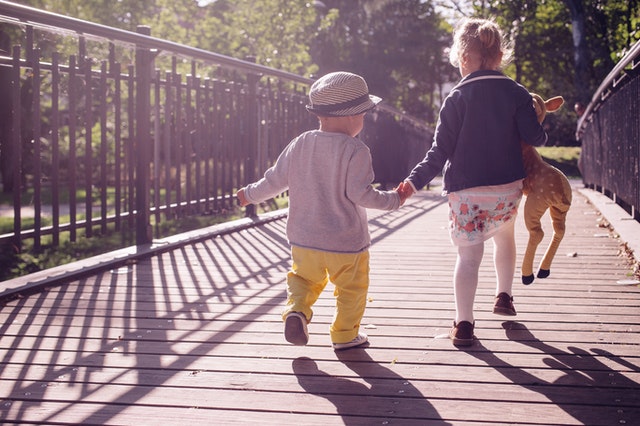What is emotional regulation?
Emotions are a normal part of our everyday life – we feel a range of positive and negative emotions each day. Emotions are an important function which guide us through life by signalling toward potential threats or rewards, in response to our environments and actions. For example, if you fear something you may avoid it. If that that thing is a tiger in the wild, then this fear proves extremely helpful and keeping you safe. However, if that thing is a job interview, the fear and avoidance may result in you not obtaining your dream job. These examples highlight the importance of emotional regulation – being able to judge when to trust emotional triggers and act on them, and when not to. It is essential for us to understand how we regulate or control our emotions so we can use them optimally.
Emotional regulation therefore refers to how we strengthen, use and control these emotions. This embodies our responses to emotions, including initiating actions triggered by emotions, inhibiting actions triggered by emotions, and modulating responses triggered by emotions. For some people, especially children as their brains continue to develop, feeling and understanding emotions can seem overwhelming.
Children learn to regulate their emotions as they are exposed to situations resulting in learned opportunities. Emotional regulation is a skill that can be learned, developed and trained. Some may find this more challenging than others. A child’s innate capacities for self-regulation are largely determined by their temperament and personality. However, environment plays an integral role in the development of a child’s emotional regulation ability, learning from how their caretakers manage expectations, demands and frustrations. Children with ADHD, Autism, or anxiety may find it particularly challenging and require additional supports to develop these skills.
How to recognise if a child is having difficulty regulating their emotions?

When we are regulated, all components of our brain work closely together to think and respond to our environments appropriately. When we become dysregulated, our prefrontal cortex(the part of our brain that processes information, and how details relate to one another, e.g., morality, others’ feelings, making choices.) and amygdala (the emotion centre for emotions an emotional behaviour), become disconnected.
At this stage, we can’t use our problem-solving skills, logic or reason. When this dysregulation occurs in children, you might see an emotional outburst (kicking,
hitting, snatching, feeling overwhelmed), or emotional suppression which can present as intense avoidance of the trigger, reduced ability to communicate, crying, or self-harming behaviours – due to their inability to respond appropriately. When a child is emotionally dysregulated, they are more likely to have impulsive reactions, decisions, and behaviours lead by emotions without logic.
How to foster positive emotion regulation skills in children:
As mentioned, this dysregulation comes from the disconnection of the prefrontal cortex and amygdala in the brain. At this stage, the brain needs to take a breather to reconnect. For children this can be achieved using some of the below strategies. It can be helpful to assist your child to identify what strategies work for them, and create a list that they can refer to in times of emotional distress:
- Mood boosting activities such as listening to music, colouring, dancing, sitting quietly, physical affection, spending quality time together.
- It can also include things such as telling someone how they feel, asking for time alone, asking to play or sit outside.
- Activities for calming down when feeling over excited, such as low stimulation activities of crafting, or playing outside to expend energy.
- Ways to respond to anger and being overwhelmed, such as breathing techniques, relaxation techniques, mindfulness and accepting emotions.

- Help them recognise the ‘mind/ body connection’ by labelling body signs of anger, excitement, anxiety, fear etc.
Finally, environment is extremely important for how a child learns to regulate their emotions. Modelling has long been recognised as a crucial mechanism through which children learn. Kids observe their parents every move, internalising and mimicking their behaviours. Kids learn the appropriate way to react to situations by watching how parents’ control and struggle with intense emotions and impulses. Ways to model and foster positive emotion regulation include:
- Naming and labelling feelings with your child. “what do you feel now”, “do you think you feel xxx?”, “sounds like you might be feeling xxx, xxx is when you feel xxx, is that right?”.
- Modelling emotion recognition by telling children how you are feeling, putting a label and explanation to it. For example, “I am feeling xxx, so I am going to do xxx”.
- Encourage the use of emotion regulation skills through reward and praise.
- Take your child’s emotions seriously, be empathetic, open and willing to understand their perspective.
More Information
Throughout September we will be diving into the topic, emotional suppression, exploring the different components of it and ending with strategies on how to release these suppressed emotions. R U OK? Day was on the 8th of September. A day of action to remind us to check up on friends and family, encouraging asking, “R U OK” everyday. You don’t need a qualification to ask “R U OK” or to start a meaningful conversation with a close one.




